Made in Slovenia
Slovenian Researchers Developing Ocean-Cleaning Microplastic Filter Based on Jellyfish Mucus (Video)
Euronews reports that Slovenian researchers at the National Institute of Biology (Nacionalni inštitut za Biologijo), working in cooperation with a team from Israel, are developing a way to remove microplastic particles from the oceans – using jellyfish mucus. The gelatinous mucus, which the jellyfish secrete when under stress, is being used to develop a TRL 5-6 prototype microplastics filter that could, if successful, could be one approach to reduce sea pollution.
Slovenia is especially well-suited for such work, as the Adriatic often suffers from “jellyfish blooms”, destructive invasions of these simple yet fascinating creatures, caused by climate change and overfishing.
The work, which is funded by the EU’s Horizon 2020 initiative, is part of the broader GoJelly project, which is also examining the use of jellyfish, caught or farmed, in agricultural fertilisers – due to the high levels of phosphate, nitrogen and potassium they contain – and as a food, with jellyfish already consumed in parts of Asia (see the related papers “Mediterranean jellyfish as novel food: effects of thermal processing on antioxidant, phenolic, and protein contents” and “The attitudes of Italian consumers towards jellyfish as novel food”).
You can learn more about the various GoJelly projects here, while you can monitor jellyfish blooms in the Adriatic here.
BTS, also known as Bangtan Boys, is a Korean boy band of enormous global popularity, second on the list of the IFPI best-selling artists in 2018, just after Drake and in front of, well, everyone else.
With their latest music video release, ahead of the upcoming new album, BTS have made a sharp and bold break with the usual K-pop style of music, and especially video, by leaving the stage to the Slovenian MN Dance Company from Nova Gorica, which choreographed a dance film to a version of the group’s new song, Black Swan, with an orchestral background. The location of the film appears to be at the abandoned Hawthorne Mall in California.
On its fourth day of release the video is already approaching 22 million views and seems to have been very well received by the group’s fans. Even the band members themselves appeared surprised by artistic quality of the final product when they saw it for the first time just before its release.
The dancers in the video, as well as the choreography, are from a relatively small dance company from Nova Gorica, Slovenia. MN Dance Company, as it is called, was established in 2008 by the artistic directors Michal Rynia and Nastja Bremec Rynia, who are also responsible for the group’s distinctive choreographic style and its global presence.
At the company’s website we read that “lately, the company has been creating pieces for Slovene National Theatre Nova Gorica, Opera and Ballet Ljubljana, Cankarjev dom Ljubljana, Opera Graz, Theatre Rotterdam, CODARTS Rotterdam Dance Academy, International Storytelling Festival Austria, DAP Festival Italy…” and as we’ve just learned, BTS latest music video as well.
For more on NM Dance Company, Please click here.
Related: 레드벨벳 in Slovenia (Video)
Slovenia rose 10 places to #21 in Bloomberg’s 2020 Innovation Index, between Australia and Canada, with this year’s list headed by Germany, ending South Korea’s six-year run at the top, the Asian nation now at #2, with Singapore at #3.
The index is based on dozens of criteria under seven broad headings: R&D intensity, manufacturing value-added, productivity, high-tech density, tertiary efficiency (enrollment in tertiary education, percentage of the workforce with degree and the number of STEM graduates), researcher concentration and patent activity. It’s this last category where Slovenia excelled in the last 12 months, enabling it to leap ahead of such countries and territories as Canada (22), Iceland (23), Luxembourg (31), Estonia (36) and Hong Kong (39).
Notably, Slovenia is the highest ranked of the former communist or socialist states – with the next being the Czech Republic at 24, although note that China, operating under a self-proclaimed system of “socialism with Chinese characteristics”, is at 5. Slovenia is also the only member of the former Yugoslavia to appear in the top 60. More details on the list can be found here, while the top 21 are listed below.
- Germany
- South Korea
- Singapore
- Switzerland
- Sweden
- Israel
- Finland
- Denmark
- US
- France
- Austria
- Japan
- Netherlands
- Belgium
- China
- Ireland
- Norway
- UK
- Italy
- Australia
- Slovenia
STA, 15 January 2020 - Photographer Stojan Kerbler, and ballet dancer and choreographer Milko Šparemblek have been declared the winners of this year's Prešeren Prizes, Slovenia's top accolades for lifetime accomplishments in the arts.
Kerbler, 81, is being honoured for his body of photographic work, "a magnificent fresco of the life of the Haloze people", a "value of national importance that professional and lay public can agree on", the Prešeren Fund Committee said in announcing the winners on Wednesday.
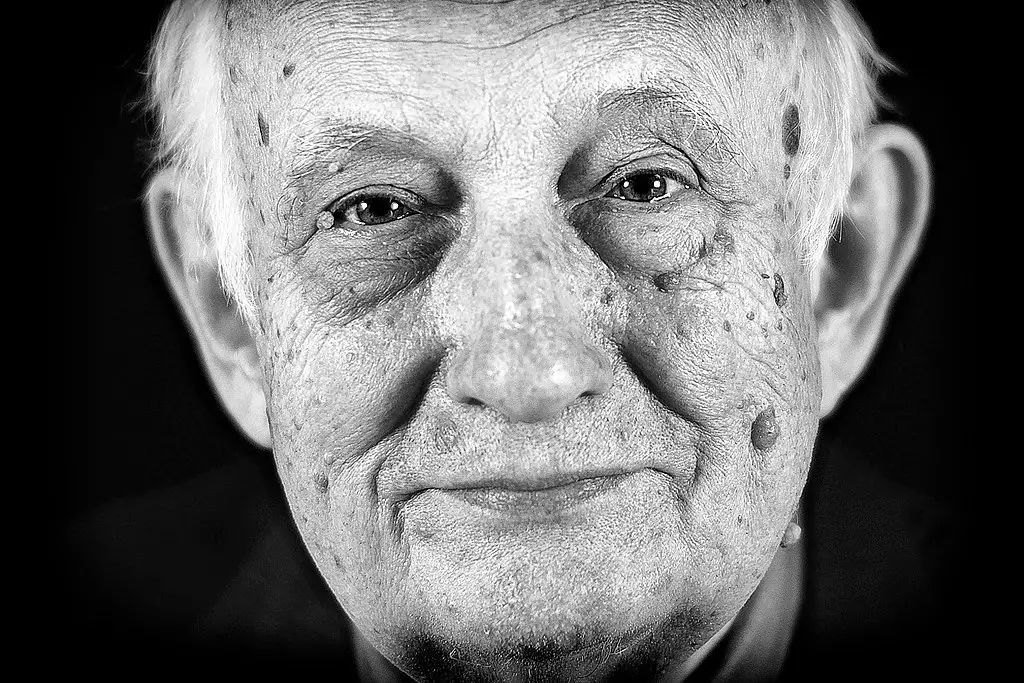
Stojan Kerbler. Wikimedia - Srecko Trstenjak CC-by-4.0
"Unpretentiously, with his modesty, love and responsibility for the fellow human being, Kerbler has set high standards of pure black-and-white analogous photography, establishing a reference point for humanistic photographic sensibility and aesthetics even for generations to come," said the committee.
Kerbler, who hails from Ptuj, has never sought his motifs around the globe, never photographed excess situations. Rather, he has caught in the lens the unforgettable, warm images of the inevitable flow of everyday life, winning acclaim at home and abroad for his 'spectacle de la vie quotidienne'.
At 91 years of age, Šparemblek is the oldest still working choreographer in the world. Spanning seven decades, his oeuvre comprises more than 150 ballet, opera and theatrical productions for 45 theatres worldwide, heard the winners-announcing event at the Ljubljana opera house.

Milko Šparemblek. Screenshot
"Milko Šparemblek is a charismatic man and artist who leads us as creators and viewers reliably and joyfully from the labyrinths of the world into the embrace of our own hearts," said the committee in the justification.
Šparemblek, who was born in Koroška in the north of Slovenia, but lives in Croatia's Zagreb, where he graduated in comparative literature and completed a ballet high school before pursuing further education in Paris and New York, is seen as one in a generation of artists of global renown whose work has led to a change in thinking about dance in modern times.
In their first reactions to the honour for the STA, Kerbler said that he understood the prize as recognition for classic auteur photography and Slovenian photography in general, while Šparemblek said winning the Prešeren Prize meant "you are being recognised, remembered, not forgotten".
The Prešeren Fund Prizes for achievements in the past three years go to graphic designer Nejc Prah, actress Nina Ivanišin, composer and accordionist Luka Juhart, film director Rok Biček, translator Suzana Koncut and costume designer Alan Hranitelj.
Ivanišin, a member of the ensemble of the SNG Drama Ljubljana theatre, is being honoured for her roles of female heroines Antigone, Francka, Nežka and Agata Schwarzkobler and for her freelance projects, and Koncut for her translations of French fiction and theory over the past three years.
Juhart won the recognition for achievements in the past three years, including his composition Unleashed, and Biček for The Family, his monumental 2017 feature-length documentary about a dysfunctional family of people with special needs that he followed for more than a decade.
Prah won over the jurors with the visual image of the 33rd Graphic Biennial, promotional material for a series of experimental concerts and his independent exhibition, while Hranitelj is being honoured for Parallel Worlds of Alan Hranitelj, a 2019 exhibition showcasing some of his major costumes from his career.
"Each year, the prizes provide an opportunity to show what our arts and culture are capable of. We definitely reach all the way to the starts," Culture Minister Zoran Poznič said in his address to the winners-announcing event.
Coming with a prize money of EUR 21,000 for lifetime achievement and EUR 7,000 for individual accomplishments, the prizes will be presented on 7 February, the eve of Culture Day, a national holiday commemorating the death of Romantic poet France Prešeren (1800-1849).
STA, 13 January 2020 - A senior Chemistry Institute researcher has received a EUR 150,000 follow-up grant from the European Research Council (ERC) to develop applications for a novel gene-editing method that had been discovered as part of an earlier ERC grant.
Roman Jerala, the head of the Chemistry Institute's synthetic biology department, had received the prestigious EUR 2.5 million ERC advanced grant for protein research in 2018 and his team have already discovered a novel way to use the popular CRISPR gene editing technique.
The new proof of concept grant that he received now is meant to facilitate the transfer of these scientific findings into practice, for forging partnerships, and for the initial phase of commercial deployment.
Last year the Chemistry Institute submitted a patent application for the improved CRISPR method, now the researchers plan to develop technologies for biotechnical use in plants, microorganisms and mammal cells.
The new project is called CCEdit and will last 12-18 months in cooperation with researchers from Oxford University and Cambridge University, links that are expected to improve the commercial potential of the technique.
Cell and gene therapy is one of the fastest-growing areas of medicine and provides new avenues for treatment of the most difficult diseases, including cancer.
Klemen Slakonja, the most successful Slovenian YouTuber, just came out with another potential hit. After a collection of music videos in which he impersonates famous people singing, his latest gem comes in a form of a tourist ad for Slovenia, presented by the American First Lady, Melania Trump.
Slakonja, who is an actor by profession, looks stunning while introducing Slovenia’s main tourist attractions, Melania’s home town of Sevnica included.
Last month Klemen Slakonja posted his new music video featuring Luka Dončić and Drake, which has since gathered close to a million views. His most popular YouTube video so far, with 28 million views, remains Putin Putout, posted in February 2016.
STA, 9 January 2020 - Jadran Lenarčič, the director of the Jožef Stefan Institute, the country's top research institution, was declared the Person of the Year 2019 by the newspaper publisher Delo as the award ceremony was held in Cankarjev Dom on Thursday evening.
Lenarčič is the long-serving head of Slovenia's largest and most important scientific institution, who has been successfully managing 500 doctors of science "who create the future of our country", the award jury said.
As a scientist, he is one of the pioneers in robot kinematics, biorobotics and humanoid robots, and today is among the most appreciated authors and lecturers in this scientific field, it added.
In the past year, Lenarčič held lectures at the Academy of Sciences of the Institute of Bologna and, as a member of a task force of the European Commission, participated in the drafting of a document on promising technologies.
Lenarčič, who was picked among ten nominees by Delo readers and editors, was also decorated with the insignia of chevalier in the French National Order of Merit in 2019.
He knows "how to listen to inspiration, which is the most important guide for him, because he says that ratio keeps a person in the same place, while it is only possible to take a step into the unknown with imagination."
Addressing the ceremony, which was attended by Prime Minister Marjan Šarec, the award winner said he was glad that the title had been given to a scientist, and that he was a scientist at heart.
Lenarčič said that the Jožef Stefan Institute was a symbol of Slovenian science, research, technological progress, innovation and creativity and bore the name of "one of the greatest physicists of in history of mankind".
"Slovenia is small ... and we will be successful only if we are open, if we exchange and compete with people outside our borders," he said, adding that "science is like a parachute - it works if it is open."
He concluded by saying what he had told the prime minister as he visited the institute two months ago - "investing in science is not cheap, but it is not the most expensive thing in the world, not investing is science is."
Šarec said prior to the announcement that being the person of the year was an honour and responsibility. "This person must be aware that people follow them and admire them," he added.
Lenarčič succeeds Uroš Ahčan and Vojko Didanovič, the first surgeons to complete a full nose reconstruction from own tissue, who were declared the Person of the Year by Delo last year.
You can learn more about the Jožef Stefan Institute here.
STA, 8 January 2020 - The Female Engineer of the Year title for 2019 went to Aida Kamišalić Latifić, a researcher and professor at the Maribor Faculty of Electrical Engineering and Informatics, as the award ceremony was held on Wednesday in the Cankarjev Dom arts centre. Kamišalić Latifić came to Slovenia as a Bosnian war refugee in 1992.
The judging panel considers the winner's life story "an inspiration for the young, encouraging them to follow their engineering dreams - even if the circumstances in which they dream are challenging".
Kamišalić Latifić's life motto is "they can take everything away from you, except knowledge". She already excelled as a student, receiving the faculty's commendation for her research work. In 2014, she acquired a doctoral degree in computer science and informatics.
Tisti, ki so jim blizu matematika, fizika, kemija, naj si upajo sanjati o takšnih poklicih, otrokom, ki se odločajo o svojem poklicu, sporoča inženirka leta 2019 dr. Aida Kamišalić Latifić.✨➡️https://t.co/DOysIUGQVN
— Časoris (@CasorisUrednik) January 9, 2020
Her research has been recently focused on blockchain technology. She is an inventor and advocate for female-friendly working spaces at the Institute of Informatics, being a supporter of the Ladies in Informatics initiative.
Apart from busting gender myths in an occupation dominated by men, she also does that on the football field, playing for an all-women team.
Kamišalić Latifić was chosen among ten nominees who are all promoting engineering, science and innovation.
The title was awarded for the second time - last year it went to Dora Domanjko, an electrotechnology expert. The competition is organised by IRT3000, a magazine focusing on innovation, development and technology, Mediade, a company providing assistance with product development, and partners.
The event aims to promote women in science, technology, engineering and mathematics (STEM). In Europe, there is a gender imbalance in these areas, with only some 25% of such studies being undertaken by women.
In Slovenia, the situation looks somewhat more promising, with female STEM students accounting for about a third of all such students.
One of the main reasons why young women are not choosing STEM careers is also a lack of role models and inadequate explanation of the role of engineers in societal development, said the organisers.
Labour Ministry Ksenija Klampfer pointed out in her address at the ceremony that gender stereotypes were still present in society and urged putting an end to them.
Meanwhile, Education Minister Jernej Pikalo said that as long as gender discrimination and inequalities were not stopped, society needed positive discrimination and role models.
STA, 6 January 2020 - US First Lady Melania Trump remains the most influential Slovenian, according to a list compiled by the right-leaning magazine Reporter, ahead of PM Marjan Šarec and UEFA boss Aleksander Čeferin.
The Reporter Top 100 list takes into account formal influence associated with the person's post or job, as well as their informal influence.
Reporter says that there is no doubt about Melania Trump being by far the most influential Slovenia, and that she will stay so as long as she remains in the White House.
All our stories on Melania Trump are here
PM Marjan Šarec this year replaced Aleksander Čeferin in second spot, with Reporter commenting that along with the powers associated with the executive post, Šarec has also gained informal influence.
Čeferin, who the magazine says as EUFA boss has access to both the Pope and Russian President Vladimir Putin, is followed by Slovenian President Borut Pahor and parliamentary Speaker Dejan Židan.
The most influential aides of Šarec, according to the magazine, are Finance Minister Andrej Bertoncelj in 6th spot, and Šarec's national security adviser Damir Črnčec in 8th place.
Janez Lenarčič, the European crisis management commissioner, ranks 7th.
Rounding off the top ten are Janez Janša, the leader of the opposition Democratic Party (SDS), and the man widely perceived as his nemesis, Milan Kučan, Slovenia's first president.
Silvester Šurla, the Reporter editor-in-chief, writes that Kučan, who slipped from 6th place a year ago, wields the biggest informal power of all people on the list, along with Gregor Golobič, the former long serving secretary general of Liberal Democracy (LDS), the party that ruled Slovenia for more than a decade until 2004. Golobič ranks 11th on the list.
On the opposite side of the political spectrum, "the main uncle working in the open and behind the scenes", as Šurla writes, is Janez Janša, his formal and informal power being greater than Kučan's.
"Janša has managed to politically subjugate virtually all of the right bloc, from [Marjan] Podobnik's SLS [People's Party] and [Matej] Tonin's NSi [New Slovenia] to a number of civil society organisations in the right ideological pole.
"As a former prime minister he still has a network of loyal people at state institutions and enterprises with millions of euro flowing in regularly from Orban's Hungary allowing him to manage his propaganda machinery, packed into (party) media," writes Šurla about Janša.
All our stories on Janez Janša are here
After Melania, the second highest ranked woman on the list is former PM Alenka Bratušek in 12th spot.
She is followed in 13th by Zmago Jelinčič, the leader of the National Party (SNS), whose influence increased now that his party secures majority to the Šarec minority government.
The politician whose influence declined the most is Ljubljana Mayor Zoran Janković, while the NBA superstar Luka Dončić climbed 50 spots to rank 50th in the biggest leap on the list since last year.
The list includes 22 new names, including Andrej Šiško, the leader of the paramilitary Štajeska guard, in 100th spot.
STA, 6 January 2020 - Physician and humanitarian worker Ninna Kozorog, who is heading an association which has campaigned for assistance to retirees living in poverty, is the recipient of the Slovenian Woman of the Year 2019 award by the women's magazine Jana/Zarja.
Kozorog heads Humanitarček, an association for the promotion of humanitarian activity, whose activities include a project called Vida, which aims at highlighting the difficulties faced by the elderly people in remote areas.
"The Humanitarček association helps the homeless and elderly and all who are being lost in the riddles of life they are not able to solve on their own," the magazine said as the award was conferred for the 31st time on Sunday.
According to Jana/Zarja, Kozorog always makes sure that people keep their dignity, and what is very important, she and her colleagues do not assist with money, they jump in to help with exactly what people need.
"This may be advice when people fill in forms, warm socks or wood for an old stove," the magazine's website adds.
You can follow the group on Facebook here
The Slovenian painter Sašo Vrabič has been named as one of the seven winners of the Year of Rembrandt contest for his painting Girl at the Exit – shown at the top of this story and inspired by Anton Ažbe’s Zamorka (1895), on display at Slovenia’s National Gallery.

Top of The Crisis 2, oil on canvas, 4.6 x 6.5 feet
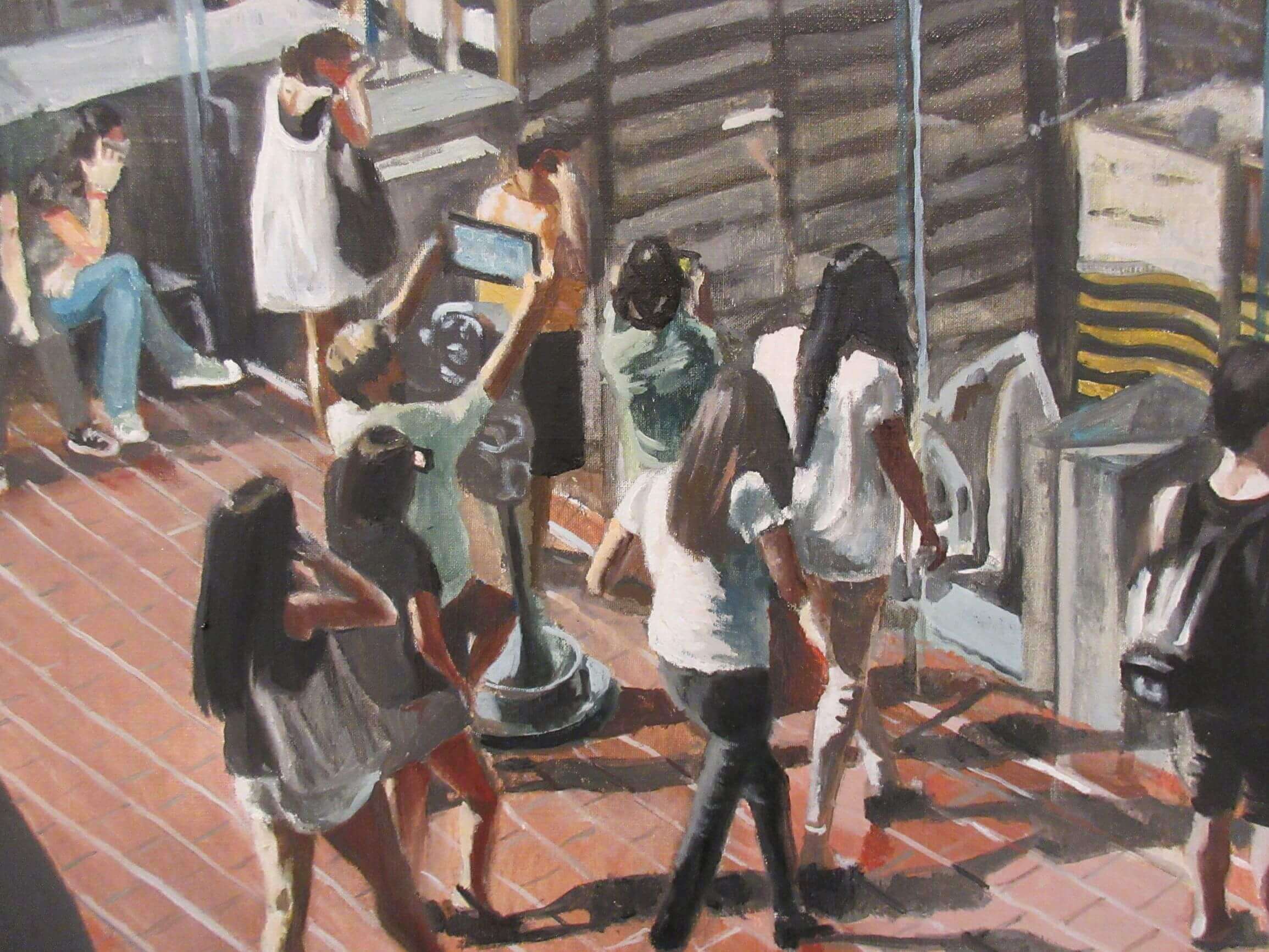
Detail

The artist at work
Vrabič is a graduate of the Academy of Fine Arts and Design in Ljubljana, with a long list of exhibitions and other commendations, but since his works are among that blessed set that require no artist statement to appreciate we’ll just share some of them here.
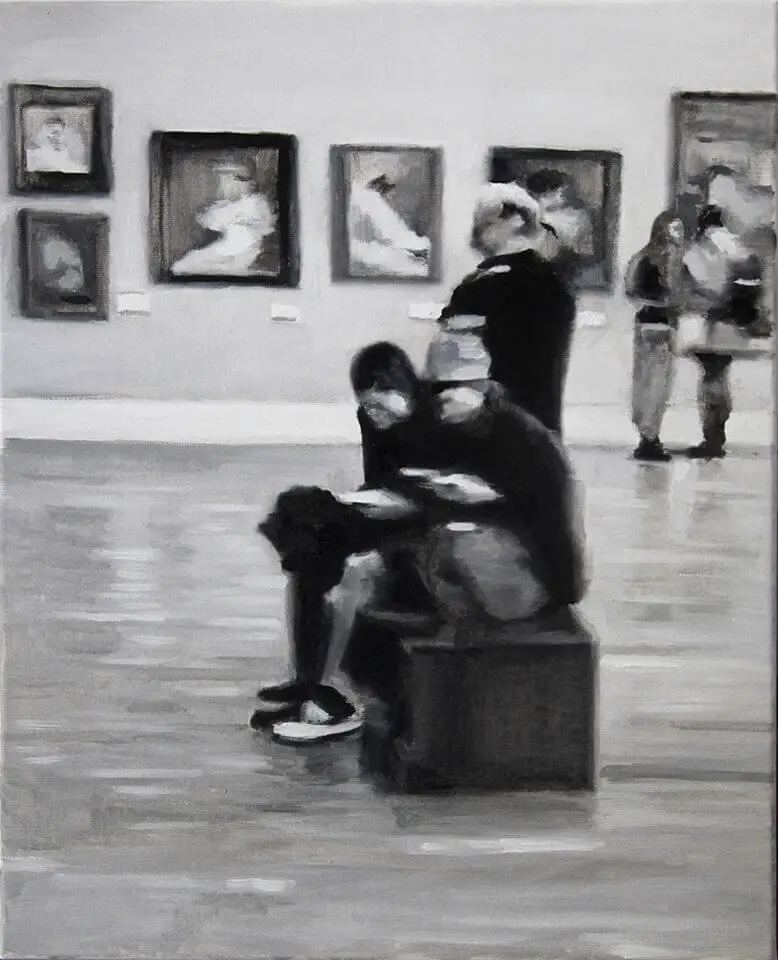
Rest (2019), oil on canvas, 50 x 40 cm
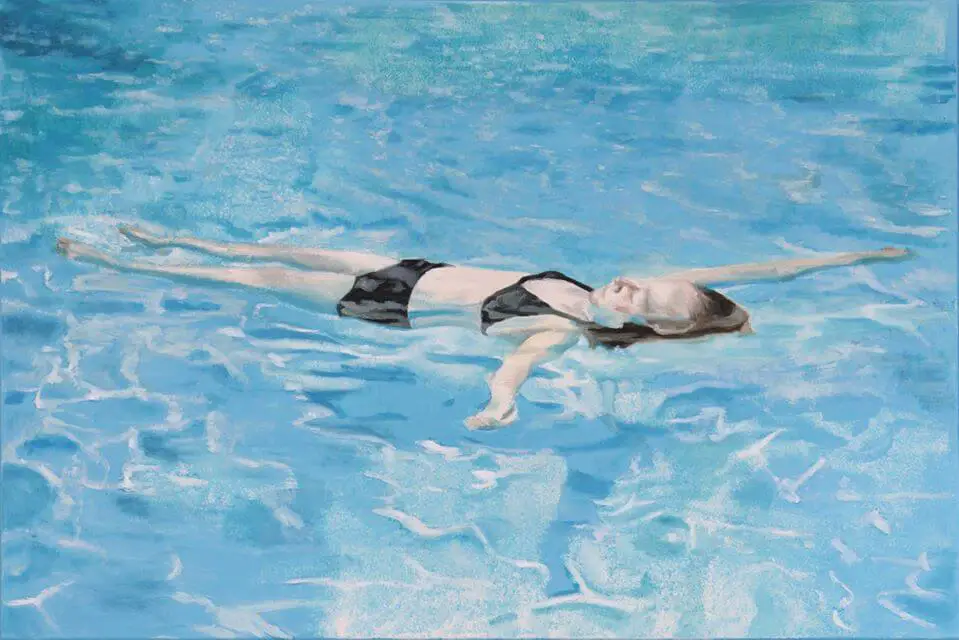
There Are Too Many Words (2017), acrylic and oil on canvas, 80 x 120 cm
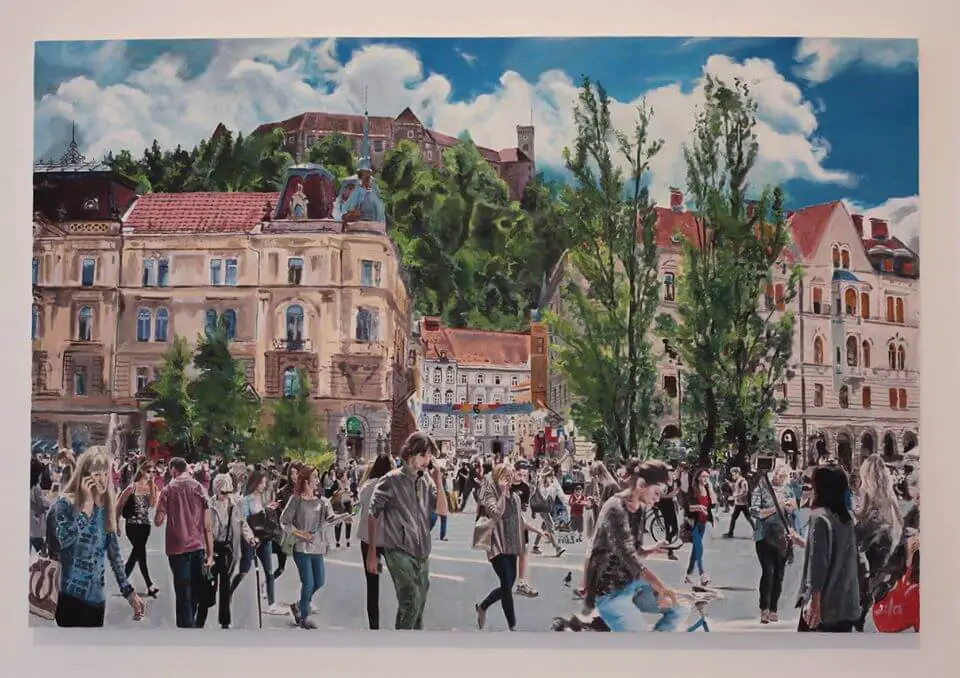
Ljubljana's Trees, A Boy With An Apple, Put in a Cloud, ASAP! (2016) (phase 1), acrylic on canvas, 100 cm x 150 cm
If you’d like to see more of his work then you can visit the Rijksmuseum in Amsterdam next year, follow him on Facebook or visit his website, and if you’d like to buy some then check out his page on SLOART (with our story on this exciting and ambitious project to bring some trust and transparency to the Slovene art market here).




